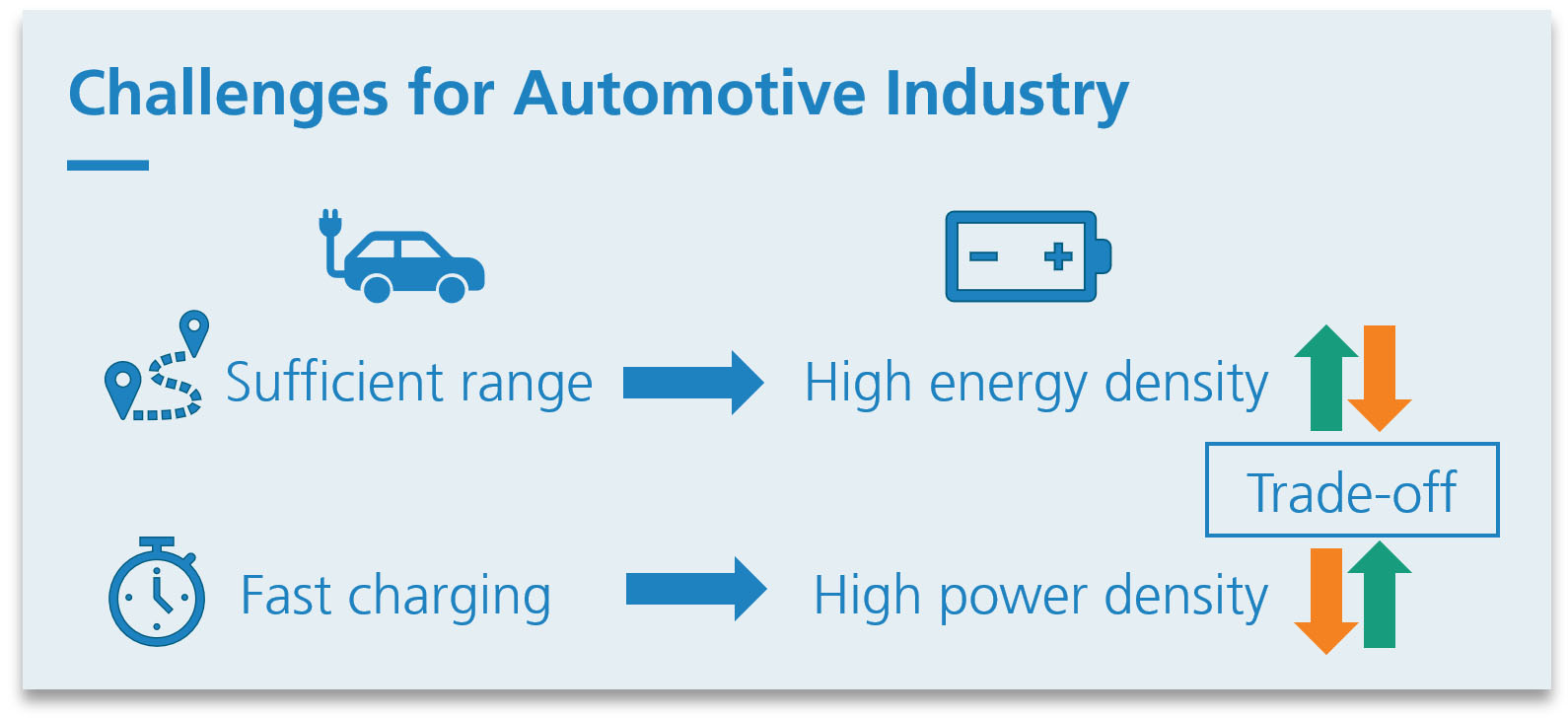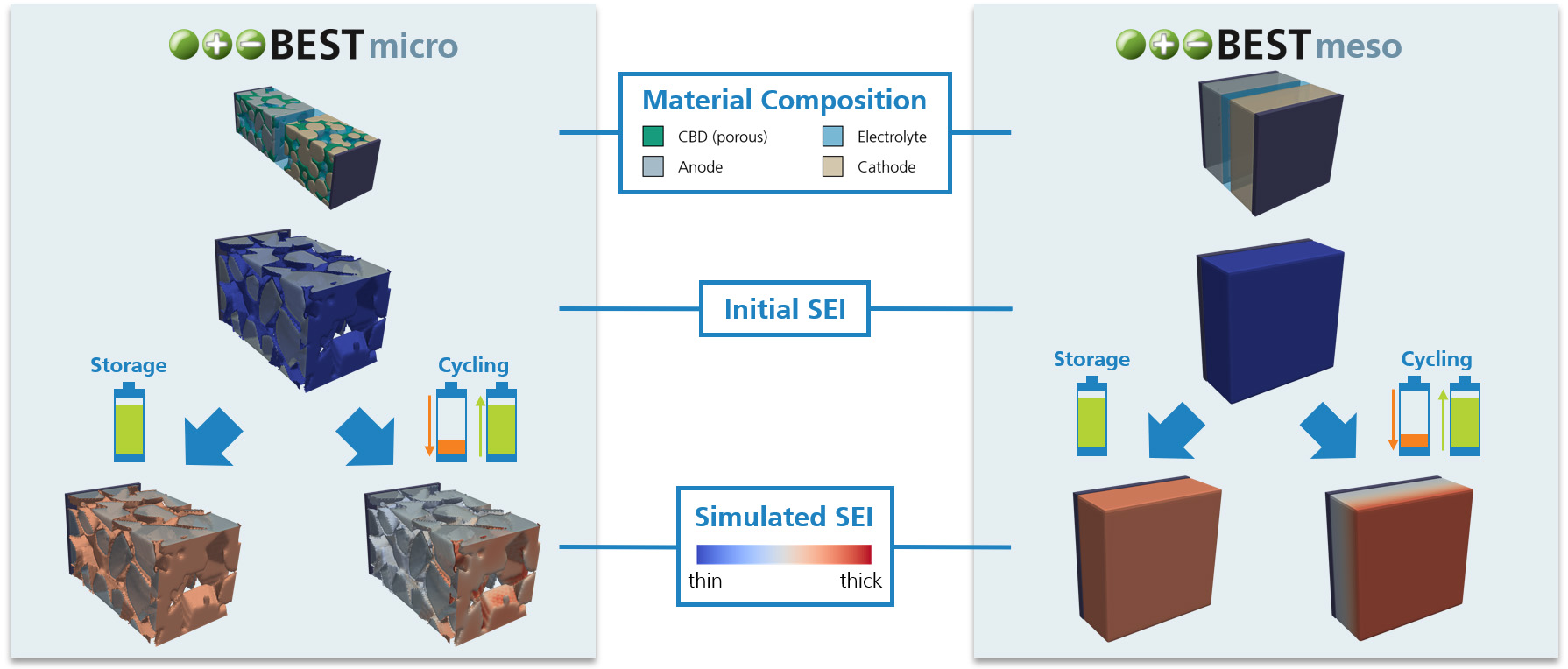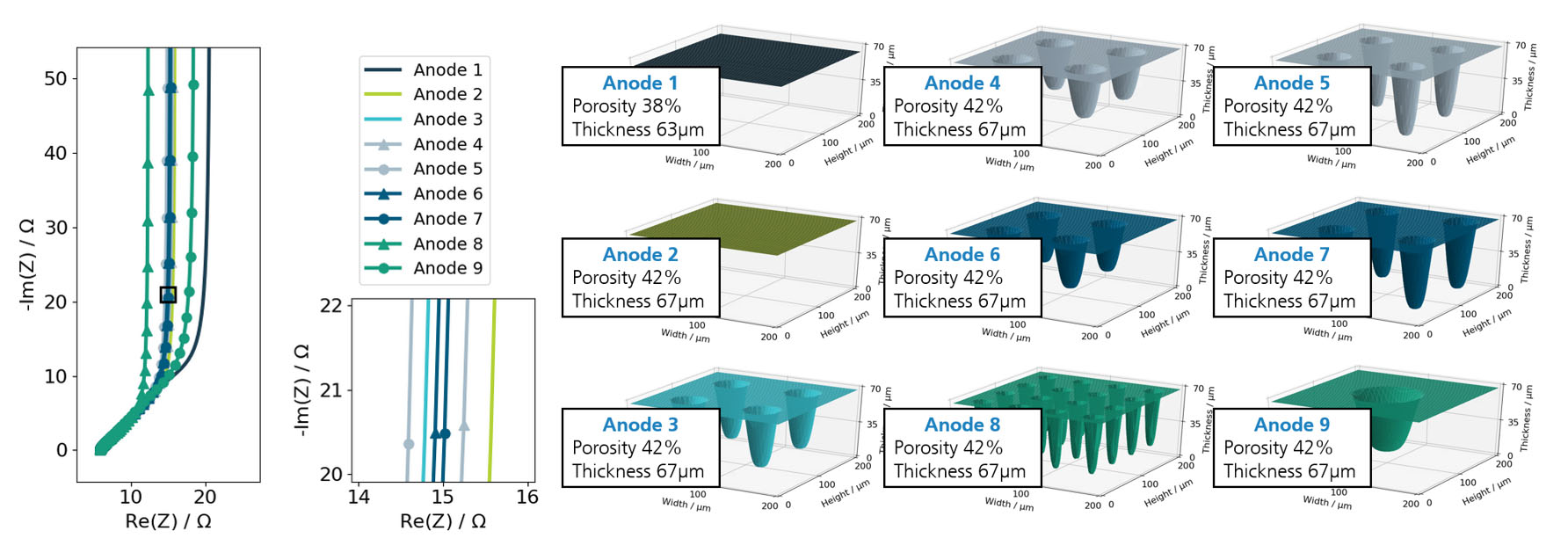Two key criteria for battery electric vehicles (BEVs) are the range of the vehicle and its fast-charging capability. On the battery level, the former translates to demands for high energy densities for the battery cells, while the latter imposes demands for high power densities. However, these two criteria are typically conflicting, such that an improvement in one of them comes at the cost of a trade-off in the other.
The BMWK-funded project »structur.e« is therefore focusing on the development of processing techniques that modify the anode microstructure in such a way that the power density of electrodes is as high as possible despite the high energy density. This will improve the fast-charging capability of long-range electric vehicles. The focus is specifically on anodes, as they are the limiting factor for fast-charging scenarios. During fast charging, the life of the battery is significantly impaired due to cell degradation caused by lithium plating and growth of the solid electrolyte interphase (SEI) layer.
Our team at Fraunhofer ITWM is involved in the project with mathematical expertise and our electrochemical simulation software BEST. We are further developing BEST to capture cell degradation and electrode structuring methods in our simulations. This enables us to answer design questions within the project and provides insights into the internal transport processes of Li-ion batteries.




